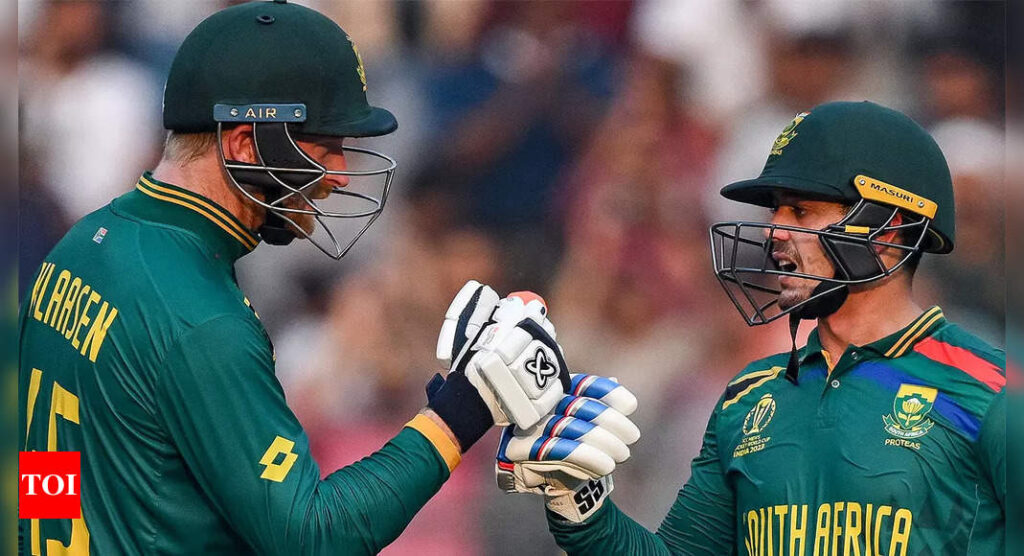[ad_1]
NEW DELHI: The inception of white-ball cricket was based on the need to raise the entertainment quotient in the sport. And it was believed that runs scored at a faster pace was the safest bet to attain that. As cricket evolved over the last four decades, including the birth of an even shorter format of the game, totals have also skyrocketed in ODIs.
While much of the pressure debate happens around the chasing teams, reality suggests the team batting first is also under pressure to put up a huge total on such placid tracks.It’s the pressure of chasing 400 while batting first. It’s about killing the game in the first innings itself.

Eight runs an over looks very par for the course in modern-day cricket. But to do it over 50 overs, it requires a lot more effort and planning. “There are still a lot of things that need to go right to get 400. There still needs to be a platform, there still needs to be solid intent through the middle overs, and then you need a sensational finish. Like you need to be powerful at the back end,” Glenn Maxwell reckoned after scoring the fastest hundred in World Cup history on Wednesday.
The pressure to get 400 on good surfaces is real. There’s still room for an anchor batter in ODI cricket even as it has kind of ceased to exist in T20 cricket. “My job is just to play what’s in front of me and get in a partnership with someone to give ourselves the opportunity to have a launch at the back end. We have got some firepower as we saw today. We have Maxwell, Cameron Green and Marcus Stoinis who can hit the long ball,” Steve Smith offered a peek into how to plan a big score for the team.

Maxwell clarified how executing a deadly finish at the back end of an ODI could be difficult. “When South Africa got their 420 here, they had three blokes getting hundreds. And it took something brilliant from Markram to come out and pump it around after a long partnership which is sometimes not easy to do. It’s tough to bat after a big partnership in ODI cricket because you’re expected to keep that momentum,” he said.
The slam-bang template was laid out by England after the 2015 World Cup. Ironically, they are the one team which has failed miserably to execute it during this World Cup. Smith, Maxwell and Markram have harped on the need to have partnerships. England went in with all-or-nothing approach. They have set the standard with most scores of 400 and above over the last six years.

But they have been done in by their own game. Perhaps, they forgot to check the brakes of their car while going into a race. Going by how Australia and South Africa have constructed their big scores, the speeding vehicle needs to work through gears!

[ad_2]
Source link










More Stories
Australia exposed India’s little chinks in World Cup final: Sanjay Manjrekar | Cricket News
Rahul Dravid, BCCI engage in discussion but board inclined towards new coach | Cricket News
IPL 2024: Delhi Capitals retain Prithvi Shaw | Cricket News